
- Home
- Travel Packages
- Top Destination
-
Travel Attraction
By Category
Top Attraction

- Travel Agents
- Car Rentals
- Hotels
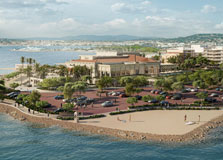
Palm Beach in Cannes is a renowned seaside destination, known for its beautiful sandy beaches, luxurious ambiance, and vibrant nightlife. Located at the tip of Pointe Croisette, this area offers a mix of relaxation and entertainment, making it a favorite among tourists and locals alike. How to Reach Palm Beach, Cannes You can reach Palm Beach through various means: By Air: The nearest airport is Nice Côte d'Azur Airport, about 30 km from Cannes. By Train: Cannes train station is well-connected to major cities in France. By Car: Palm Beach is accessible by car with parking options nearby. By Public Transport: Local buses and taxis provide easy access to Palm Beach. Weather in Palm Beach, Cannes Cannes enjoys a Mediterranean climate: Spring (March-May): Warm and pleasant with temperatures around 15-22°C (59-72°F). Summer (June-August): Hot and sunny, reaching up to 30°C (86°F). Autumn (September-November): Mild with occasional rain. Winter (December-February): Cooler but rarely below 10°C (50°F). Timing and Entry Details Palm Beach is accessible year-round, and the beach itself is free to visit. Private beach clubs and restaurants may have specific hours and entry fees. Why is Palm Beach, Cannes Famous? Palm Beach is famous for its glamorous setting, high-end beach clubs, and nightlife. It is also known for hosting exclusive events and its proximity to the prestigious Cannes Film Festival. History and Architecture Originally developed in the early 20th century, Palm Beach gained popularity as a luxurious retreat. It has been home to famous casinos and elite gatherings, contributing to its sophisticated charm. Things to Do in Palm Beach, Cannes Relax on the Beach: Enjoy sunbathing and swimming in the crystal-clear waters. Visit Beach Clubs: Experience luxury at private beach lounges. Explore the Pointe Croisette: Walk along the scenic coastline. Try Water Sports: Engage in jet skiing, paddleboarding, and sailing. Interesting Facts about Palm Beach, Cannes The beach was a filming location for several international movies. It has been a favorite retreat for celebrities and high-profile guests. Palm Beach Casino was once a major attraction in the area. Tips for Visiting Palm Beach, Cannes Arrive early in summer to secure a good spot on the beach. Book beach club reservations in advance during peak season. Wear comfortable beachwear and bring sunscreen.
Explore More
Midi Beach is one of the most beautiful and relaxing beaches in Cannes, offering stunning coastal views, soft golden sand, and a tranquil ambiance. Located west of the city center, it is a popular destination for both locals and tourists looking to unwind by the Mediterranean Sea. How to Reach Midi Beach, Cannes You can reach Midi Beach through various means: By Air: The nearest airport is Nice Côte d'Azur Airport, approximately 30 km from Cannes. By Train: The Cannes train station is well-connected to major cities in France. By Car: Easily accessible by car, with parking spaces available nearby. By Public Transport: Local buses and taxis can take you to the beach conveniently. Weather in Cannes Cannes enjoys a Mediterranean climate: Spring (March-May): Warm and pleasant, with temperatures around 15-22°C (59-72°F). Summer (June-August): Hot and sunny, reaching up to 30°C (86°F). Autumn (September-November): Mild with occasional rain. Winter (December-February): Cooler but rarely below 10°C (50°F). Timing and Entry Details Midi Beach is open to visitors all year round. Entry to the beach is free, but there are private beach clubs that offer sunbeds and amenities for a fee. Why is Midi Beach Famous? Midi Beach is famous for its peaceful atmosphere, scenic coastal views, and accessibility. Unlike some of the more crowded beaches in Cannes, it offers a relaxing escape while still being close to the city’s vibrant attractions. History and Features Originally developed to extend the beach area in Cannes, Midi Beach has grown into a favorite spot for relaxation. It features a long stretch of soft sand, gentle waves, and a pedestrian-friendly promenade. Things to Do at Midi Beach Relax on the Sand: Enjoy the sun and the calm sea breeze. Swimming: The water is clear and great for swimming. Beach Sports: Play volleyball or paddleboarding. Walk Along the Promenade: Take in the scenic views. Visit Nearby Cafés: Enjoy a meal with a sea view. Interesting Facts about Midi Beach It is one of the longest public beaches in Cannes. The beach offers stunning views of the Esterel Mountains. It is popular among families due to its calm and shallow waters. Tips for Visiting Midi Beach Arrive early in peak season to find a good spot. Bring sunscreen and water to stay hydrated. Check for private beach areas if you prefer extra comfort.
Explore More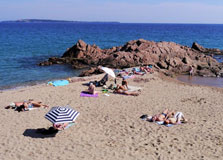
Rocher Beach is a hidden gem in Cannes, known for its crystal-clear waters, stunning rock formations, and serene ambiance. It is an ideal destination for travelers looking for a quiet and scenic beach experience away from the crowds. How to Reach Rocher Beach, Cannes You can reach Rocher Beach through various means: By Air: The nearest airport is Nice Côte d'Azur Airport, approximately 30 km from Cannes. By Train: Cannes train station provides easy access to the beach. By Car: The beach is accessible by car, with nearby parking available. By Public Transport: Local buses and taxis can take you conveniently to the beach. Weather in Cannes Cannes enjoys a Mediterranean climate: Spring (March-May): Pleasant temperatures between 15-22°C (59-72°F). Summer (June-August): Hot and sunny, with highs reaching 30°C (86°F). Autumn (September-November): Mild weather with occasional rain. Winter (December-February): Cool but comfortable, rarely below 10°C (50°F). Timing and Entry Details Rocher Beach is open all year round. The beach is public and free to access, though there are some private areas offering extra amenities for a fee. Why is Rocher Beach Famous? Rocher Beach is famous for its scenic beauty, clear blue waters, and tranquil setting. It is also a popular spot for snorkeling due to its rich marine life. History and Features The beach gets its name from the distinctive rock formations that line its coast. It has long been a favored spot for nature lovers and those seeking an escape from the bustling city life. Things to Do at Rocher Beach Relax by the Shore: Enjoy the peaceful surroundings and sunbathe on the beach. Swimming: The water is calm and great for a refreshing dip. Snorkeling: Explore the vibrant underwater marine life. Photography: Capture the stunning landscape of rocks and sea. Picnicking: Bring a meal and enjoy a relaxing time by the water. Interesting Facts about Rocher Beach It is one of the lesser-known beaches in Cannes, offering a peaceful retreat. The beach is surrounded by natural rock formations, adding to its charm. It is a preferred spot for locals who want to avoid tourist-heavy areas. Tips for Visiting Rocher Beach Arrive early to find the best spots along the shore. Bring water shoes if you plan to explore the rocky areas. Pack snorkeling gear to enjoy the marine life.
Explore More
The Old Port of Marseille, also known as "Vieux-Port," is one of the most iconic and historically significant landmarks in the city. It has been the heart of Marseille’s maritime activities for over 2,600 years, serving as a major trade and fishing hub. Today, it is a vibrant area filled with restaurants, cafes, and cultural attractions. How to Reach Old Port, Marseille The Old Port is centrally located and easily accessible by various modes of transportation: By Metro: Take Line 1 and get off at "Vieux-Port – Hôtel de Ville" station. By Bus: Several buses, including lines 60 and 82, stop near the port. By Car: Parking is available nearby, but it is recommended to use public transport due to traffic. By Foot: If you're staying in the city center, the Old Port is within walking distance. Weather in Marseille Marseille enjoys a Mediterranean climate with warm summers and mild winters: Spring (March-May): Pleasant and mild, ideal for sightseeing. Summer (June-August): Hot and sunny, perfect for enjoying waterfront activities. Autumn (September-November): Warm temperatures with fewer tourists. Winter (December-February): Mild but sometimes windy, with occasional rain. Timing and Entry Details The Old Port is open 24/7 and free for visitors to explore. However, specific attractions such as boat tours, fish markets, and museums have their own schedules. Why is Old Port, Marseille Famous? The Old Port is famous for its rich history, lively atmosphere, and stunning views of Marseille’s coastline. It has been a vital center for commerce, fishing, and cultural exchange for centuries. History and Architecture The Old Port dates back to 600 BC when Greek settlers founded the city of Massalia, making it one of the oldest ports in Europe. The port has witnessed various historical events, from medieval trade to World War II bombings. Today, it combines historical charm with modern urban development. Things to Do at Old Port, Marseille Visit the Fish Market: Experience the traditional fish market where fresh seafood is sold daily. Enjoy a Boat Tour: Take a boat trip to the Frioul Islands or the famous Château d’If. Explore Fort Saint-Jean: A historic fortress with panoramic views. Dine at Waterfront Restaurants: Savor delicious seafood at one of the many restaurants lining the harbor. Walk along La Canebière: A historic street leading from the Old Port to the heart of Marseille. Interesting Facts about Old Port, Marseille The Old Port has been a hub of maritime activity for over 2,600 years. It was partially destroyed during World War II and later reconstructed. The port hosts various festivals and events throughout the year. Tips for Visiting Visit early in the morning to see the bustling fish market. Wear comfortable shoes for exploring the waterfront and surrounding areas. Try the local specialty, "bouillabaisse," a traditional fish stew. Be mindful of pickpockets in crowded areas.
Explore More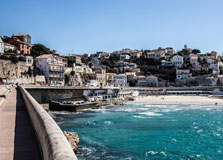
Corniche Kennedy is a stunning coastal road in Marseille that offers breathtaking views of the Mediterranean Sea. This scenic boulevard stretches for several kilometers, providing visitors with a perfect blend of urban beauty and natural landscapes. How to Reach Corniche Kennedy, Marseille You can reach Corniche Kennedy using different transportation options: By Bus: Several bus routes, including lines 83 and 19, provide access to Corniche Kennedy. By Car: You can drive along the boulevard and find parking in designated areas nearby. By Bicycle: Rent a bike and explore the scenic route at a leisurely pace. By Foot: A great way to enjoy the views is by walking along the promenade. Weather in Marseille Marseille enjoys a Mediterranean climate with warm summers and mild winters: Spring (March-May): Mild temperatures, perfect for outdoor activities. Summer (June-August): Hot and sunny, with temperatures reaching 30°C (86°F). Autumn (September-November): Pleasant weather with fewer tourists. Winter (December-February): Cool but comfortable, rarely dropping below 5°C (41°F). Timing and Entry Details Corniche Kennedy is accessible at all times as it is a public road and promenade. Opening Hours: Open 24/7 Entry Fee: Free access Why is Corniche Kennedy Famous? Corniche Kennedy is renowned for its panoramic views of the Mediterranean, stunning sunsets, and vibrant atmosphere. It is also famous for its historical importance and its role as a popular filming location. History and Architecture The Corniche was named after former French President John F. Kennedy and has been a vital part of Marseille’s coastline for decades. Along the route, you will find beautiful villas, historic landmarks, and modern infrastructure blending seamlessly. Things to Do at Corniche Kennedy Enjoy a Scenic Walk: Stroll along the coastline and take in the breathtaking views. Visit the Vallon des Auffes: A picturesque fishing village along the Corniche. Relax on the Beaches: There are several beaches along the route where you can sunbathe and swim. Try Local Cuisine: Stop at waterfront restaurants and enjoy delicious seafood. Photography: Capture stunning landscapes and sunsets over the sea. Interesting Facts about Corniche Kennedy It stretches for over 5 km along the Mediterranean coastline. The Corniche is home to one of the longest benches in the world, measuring around 3 km. Many famous movies have been shot along this scenic road. Tips for Visiting Visit during sunset for the most beautiful views. Wear comfortable shoes if you plan to walk along the Corniche. Bring sunscreen and water, especially during the summer months. Consider renting a bike for a more enjoyable experience.
Explore More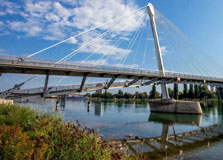
Jardin des Deux Rives is a unique cross-border park that connects France and Germany, symbolizing unity and friendship. Located between Strasbourg, France, and Kehl, Germany, the garden is known for its picturesque landscapes, walking trails, and cultural significance. How to Reach Jardin des Deux Rives, Strasbourg You can reach the park using different modes of transport: By Tram: Take Tram Line D from Strasbourg city center to Kehl, then walk to the park. By Bus: Several local buses connect to the park from Strasbourg and Kehl. By Car: Parking facilities are available on both the French and German sides. By Bicycle: The park is bike-friendly with dedicated cycling paths. Weather in Strasbourg Strasbourg experiences a temperate oceanic climate: Spring (March-May): Mild and blooming landscapes. Summer (June-August): Warm and ideal for outdoor activities. Autumn (September-November): Cool temperatures with colorful foliage. Winter (December-February): Cold with occasional snowfall. Timing and Entry Details The park is open all year round with free entry. However, some special exhibitions or events may have separate admission charges. Why is Jardin des Deux Rives Famous? The park is renowned for its international significance, as it bridges France and Germany. The iconic Passerelle Mimram pedestrian bridge allows visitors to walk from one country to another seamlessly. History and Architecture The park was inaugurated in 2004 as part of European cooperation efforts. Designed as a space for relaxation and cultural exchange, it features landscaped gardens, sculptures, and a blend of French and German architectural influences. Things to Do at Jardin des Deux Rives Walk Across the Passerelle Mimram: Experience crossing the border on this iconic pedestrian bridge. Explore the Gardens: Enjoy themed gardens representing the cultures of both nations. Attend Cultural Events: The park frequently hosts concerts, art exhibitions, and festivals. Go for a Picnic: Plenty of green spaces make it ideal for picnics. Rent a Bicycle: Ride along the dedicated cycling paths for a scenic tour. Interesting Facts about Jardin des Deux Rives The park covers both France and Germany, making it a symbol of European unity. The Passerelle Mimram bridge was designed by renowned architect Marc Mimram. It serves as a meeting point for artists, nature lovers, and cultural enthusiasts. Tips for Visiting Wear comfortable shoes, as the park is best explored on foot. Visit during spring or summer for the best views and activities. Carry snacks and drinks if you plan to spend a long time in the park. Check for events or exhibitions that might be taking place during your visit.
Explore More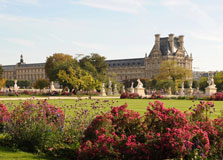
The Jardin des Tuileries is a stunning public garden in the heart of Paris, offering a peaceful retreat with beautiful landscaping, sculptures, and fountains. It is one of the most visited gardens in the city and a perfect place for a leisurely stroll. How to Reach Jardin des Tuileries, Paris The garden is centrally located and easily accessible: By Metro: The nearest station is Tuileries (Line 1). By RER: Take the RER A to Châtelet - Les Halles and walk towards the garden. By Bus: Bus lines 21, 27, 39, 68, and 95 have stops nearby. By Foot: It is within walking distance of the Louvre Museum and Place de la Concorde. Weather in Paris Paris experiences a mild climate year-round: Spring (March-May): Pleasant and blooming. Summer (June-August): Warm and ideal for outdoor relaxation. Autumn (September-November): Cool with vibrant foliage. Winter (December-February): Chilly but beautiful, often with a touch of frost. Timing and Entry Details Opening Hours: The garden is open daily from 7:00 AM to 9:00 PM (hours may vary by season). Entry Fee: Free entry for all visitors. Why is Jardin des Tuileries Famous? Jardin des Tuileries is known for: Its rich history as a royal garden dating back to the 16th century. Beautiful sculptures, including works by Rodin and Maillol. A prime location between the Louvre and Place de la Concorde. History and Architecture Originally designed in 1564 for Catherine de Medici, the garden was later redesigned by André Le Nôtre, the famous landscape architect behind the gardens of Versailles. It features classical French landscaping, symmetrical flowerbeds, and ornamental ponds. Things to Do in Jardin des Tuileries Walk along the scenic pathways and admire the beautifully maintained gardens. Relax by the fountains with a book or a picnic. Visit the Musée de l'Orangerie to see Monet's famous Water Lilies paintings. Enjoy seasonal attractions like the summer funfair. Interesting Facts about Jardin des Tuileries It was the first royal garden opened to the public after the French Revolution. The garden is part of a UNESCO-listed site. It hosts many cultural events and exhibitions throughout the year. Tips for Visiting Visit early in the morning for a peaceful experience. Bring a camera to capture the stunning scenery. Wear comfortable shoes, as the garden is vast. Check out the nearby attractions like the Louvre and Place Vendôme.
Explore More
Located in the heart of the French Alps, Aiguille du Midi stands as one of the most iconic peaks in the Chamonix Valley. Offering stunning views of Mont Blanc and surrounding mountains, it is a popular destination for travelers seeking to experience the grandeur of the Alps. Aiguille du Midi, which translates to "Needle of the Midday," rises to a height of 3,842 meters (12,605 feet) above sea level, making it a must-visit destination for those visiting Chamonix. How to Reach Aiguille du Midi, Chamonix Reaching Aiguille du Midi is a unique experience in itself. The summit is accessible by a modern cable car system, which is one of the highest in the world. The cable car ride offers breathtaking views of the surrounding mountains and valleys, making it an unforgettable journey. To get to Aiguille du Midi, you can start from the center of Chamonix, where the **Aiguille du Midi cable car station** is located. The cable car ride takes about 20 minutes and includes two stages: The first stage takes you from Chamonix to **Plan de l'Aiguille**, at 2,317 meters (7,602 feet), with scenic views of the valley below. The second stage takes you from Plan de l'Aiguille to the summit at 3,842 meters (12,605 feet), offering a truly awe-inspiring experience as you ascend. The cable car operates year-round, but during winter months, it may be subject to weather conditions, so it's always a good idea to check the weather forecast before planning your visit. Weather at Aiguille du Midi, Chamonix The weather at Aiguille du Midi is highly variable, depending on the time of year and the altitude. In summer (June to September), temperatures at the summit are relatively cool but manageable, ranging from 5°C to 10°C (41°F to 50°F). However, temperatures can drop well below freezing in winter (December to February), and heavy snowfall is common. It is essential to dress warmly, especially if visiting during colder months. Winds can also be strong at the summit, so make sure to check weather conditions before setting out. The best time to visit is typically in the summer or early autumn when the weather is more stable, and the views are at their best. Timing and Opening Hours Aiguille du Midi is open year-round, but the hours of operation can vary depending on the season. In the summer months (mid-June to mid-September), the cable car operates from 8:00 AM to 6:00 PM, offering extended hours to accommodate more visitors. In winter, the cable car runs from 9:00 AM to 4:30 PM. It is recommended to arrive early in the morning, especially during peak tourist seasons, to avoid long lines and enjoy a more peaceful experience at the summit. Visitors can stay as long as they wish once they reach the top, so take your time to explore and enjoy the incredible scenery. Why Famous for Chamonix? Aiguille du Midi is famous for several reasons, making it a key attraction in Chamonix: Unparalleled Views: The panoramic views of the Mont Blanc Massif, the French Alps, and the surrounding valleys make it one of the best vantage points in the region. World-Class Cable Car: The Aiguille du Midi cable car is one of the highest cable cars in the world, providing a thrilling ride to the top of the peak. Alpine Adventure: Aiguille du Midi is a starting point for mountaineering expeditions, including the famous ascent of Mont Blanc, making it a destination for both adventure enthusiasts and those who appreciate nature’s beauty. Step into the Void: This unique glass skywalk allows visitors to step out over the edge of the mountain and experience a thrilling view from 1,000 meters (3,280 feet) above the ground. Entry and Visit Details The entry fee for the Aiguille du Midi cable car varies based on the season and the type of ticket purchased. For a round-trip ticket, the price is approximately €65 for adults. Tickets are available at the Aiguille du Midi cable car station in Chamonix, and online booking is recommended to secure your place, especially during peak tourist seasons. Once at the summit, there are several areas to explore, including: Observation Deck: A panoramic platform where you can enjoy 360-degree views of Mont Blanc and the surrounding Alps. Step into the Void: A thrilling glass box suspended above the mountain, offering a vertigo-inducing experience. Restaurants and Cafes: There are restaurants and cafes at the summit where visitors can relax, enjoy hot drinks, and take in the surroundings. For those who are feeling adventurous, Aiguille du Midi is also a popular starting point for high-altitude skiing, mountaineering, and other alpine activities. However, these require special skills and equipment, so it’s essential to go with a guide or a professional. History and Architecture The history of Aiguille du Midi is closely tied to the development of Chamonix as a mountaineering hub. The cable car was first opened in 1955 and was considered an engineering marvel at the time. It was built to give visitors easier access to the summit of Aiguille du Midi and the surrounding area, which had been a popular destination for mountaineers for decades. The architecture of Aiguille du Midi’s summit station is modern and sleek, designed to blend in with the alpine landscape while offering maximum comfort to visitors. The station itself is built directly into the mountain, providing both shelter and access to the observation platforms. Things to Do at Aiguille du Midi There’s no shortage of things to do once you reach the summit of Aiguille du Midi. Some popular activities include: Photography: Capture the stunning views of Mont Blanc, the surrounding glaciers, and the Chamonix Valley. Step into the Void: For the brave, the glass skywalk offers a thrilling way to experience the height of the mountain. Hiking: Explore hiking routes that start at Aiguille du Midi, including the **Grand Balcon Nord** trail, which provides stunning views of the Mont Blanc massif. Mountaineering: Experienced mountaineers can begin their ascents to higher peaks, including Mont Blanc, from Aiguille du Midi. Dining: Relax and enjoy a meal with an incredible view at one of the summit's restaurants. Facts and Tips about Aiguille du Midi Altitude: The Aiguille du Midi summit stands at 3,842 meters (12,605 feet), making it one of the highest accessible points in Europe. Altitude Sickness: Be aware that the high altitude can cause altitude sickness, especially if you aren’t acclimatized. Drink plenty of water and take it easy if you feel dizzy. Weather: The weather can change rapidly in the mountains, so always check the forecast and dress in layers to stay warm and comfortable. Best Time to Visit: Summer (June to September) offers the most stable weather, but if you love snow, winter (December to February) also provides a spectacular experience. Safety: While the cable car is safe, always follow safety instructions and be cautious around edges and steep areas, especially in winter conditions.
Explore More
Lac Blanc, or "White Lake," is a stunning alpine lake located in the Mont Blanc Massif near the famous resort town of Chamonix. Known for its crystal-clear waters and breathtaking views, this lake has become a must-visit destination for outdoor enthusiasts, hikers, and nature lovers. Situated at an altitude of 2,352 meters (7,717 feet), it offers panoramic views of the surrounding mountain ranges, including Mont Blanc, the Aiguille du Midi, and the Grandes Jorasses. Lac Blanc is particularly famous for its picturesque scenery and the variety of hiking trails leading up to it. How to Reach Lac Blanc, Chamonix There are several ways to reach Lac Blanc, depending on the time of year and the level of adventure you seek. Below are the most common routes to the lake: By Cable Car: The most popular way to reach Lac Blanc is by taking the Flegere cable car from the Chamonix valley. The cable car takes visitors up to the Plan Praz station, from where a well-marked hiking trail leads to Lac Blanc. The hike is about 2.5 kilometers and takes approximately 1 to 1.5 hours, depending on your pace. This route is perfect for visitors who want to enjoy the views without too much effort. By Hike: For more experienced hikers, the route to Lac Blanc can also be accessed directly from Chamonix. The hike from the valley takes several hours, depending on the route you choose. One of the most popular hiking trails starts from the Montroc station on the Mont Blanc Express Railway. The trail can take up to 5 hours and offers a more immersive experience of the local alpine landscape. The steep climb is challenging, but the views are rewarding. By Taxi or Car: You can also drive to the Flegere cable car station or the Montroc station to begin your hike. While Chamonix is a small town, it is well connected with parking facilities available at the cable car stations, making it easy to drive directly to the starting points of the trails. Weather at Lac Blanc, Chamonix Given its high altitude, Lac Blanc experiences a typical alpine climate, which can vary significantly throughout the year. Here’s what you can expect in terms of weather: Summer (June to September): Summer is the best time to visit Lac Blanc, with average temperatures in the valley ranging from 15°C to 25°C (59°F to 77°F). At the lake itself, the temperature tends to be cooler, especially in the mornings and evenings. Expect mild conditions perfect for hiking, with clear skies and sunny days. However, be prepared for sudden weather changes, including thunderstorms. Autumn (October to November): Autumn brings cooler temperatures, with the valley experiencing temperatures between 5°C and 15°C (41°F to 59°F). At Lac Blanc, the temperature can drop closer to freezing at night, and early snow may start to appear in the surrounding mountains. This season is quieter and less crowded, offering a more peaceful experience. Winter (December to March): During winter, the area experiences cold temperatures, ranging from -5°C to -15°C (23°F to 5°F) in the valley, while the lake itself remains much colder. Snowfall is common, and the trails to Lac Blanc can be covered in snow, making it more challenging to access. The winter months are perfect for snow sports in Chamonix, although reaching the lake may require additional gear and preparation. Spring (April to May): Spring brings milder temperatures, with snow still lingering on the higher elevations. The valley experiences temperatures between 5°C to 15°C (41°F to 59°F). The trails leading to Lac Blanc can be muddy and wet, and hikers should be prepared for unstable weather. Timing and Opening Hours Due to its popularity as a hiking and sightseeing destination, Lac Blanc is accessible throughout the year. However, the best time to visit is during the warmer months, from June to September, when the trails are clear and the weather is more predictable. The Flegere cable car typically operates from mid-June to mid-September, but it is important to check schedules in advance, as weather conditions can affect the operations of the cable cars. Summer Season: The cable car operates daily, from 8:30 AM to 6:00 PM. The hiking trails to the lake are also open, though hikers should start early to avoid the midday heat. Off-Season (Spring and Autumn): During the off-season, the cable car operates on a reduced schedule, and hiking conditions may be more challenging due to the weather. Why is Lac Blanc Famous for Chamonix? Lac Blanc is famous for several reasons, each contributing to its reputation as one of the top attractions in the Chamonix region: Scenic Beauty: The lake’s stunning beauty, set against the backdrop of Mont Blanc and the surrounding peaks, makes it one of the most photographed spots in the Alps. The clear blue waters mirror the surrounding mountains, creating a postcard-worthy scene. Hiking Paradise: The area surrounding Lac Blanc is a haven for hikers, with numerous trails for different skill levels. It’s a popular destination for both casual walkers and seasoned mountaineers. Panoramic Views: From the lake, visitors can enjoy panoramic views of some of the most iconic mountains in the Alps, including Mont Blanc, the Aiguille du Midi, and the Grandes Jorasses. The combination of pristine alpine landscapes and dramatic vistas makes it an unforgettable experience. Entry and Visit Details about Lac Blanc Visiting Lac Blanc requires planning, especially if you want to explore the area in depth. Here’s what you need to know: Entry Fees: There is no entry fee to visit Lac Blanc itself, but you will need to pay for the cable car ride. The round-trip ticket for the Flegere cable car is approximately €25 for adults, with discounts available for children and groups. Prices may vary based on the time of year. Opening Hours: As mentioned, the cable car operates from mid-June to mid-September, with limited hours during the off-season. Hiking trails remain accessible year-round, but conditions can be challenging in winter and early spring. Guided Tours: For those who want a more detailed experience, guided hiking tours to Lac Blanc are available. These tours often include a local guide who can explain the flora, fauna, and geology of the area, as well as offer insights into the region’s history. What to Bring: If you plan to hike to Lac Blanc, it’s essential to bring appropriate footwear, a hat, sunscreen, and sufficient water. For longer hikes, pack food and extra layers to prepare for changing weather conditions. During the winter months, snowshoes or crampons may be necessary. History and Architecture of Lac Blanc Lac Blanc has been a key part of the Chamonix valley's natural history for centuries. It was first explored by mountaineers in the 19th century, and its position in the Mont Blanc Massif makes it an important site for alpine exploration. The Flegere cable car, which has been in operation since the early 20th century, was built to provide easier access to the area for both tourists and climbers. The cable car station and surrounding infrastructure are designed to blend seamlessly with the natural environment, allowing visitors to enjoy the beauty of the Alps while maintaining minimal environmental impact. Things to Do at Lac Blanc While the primary attraction of Lac Blanc is its natural beauty, there are several things to do in and around the lake: Hiking: The area offers a range of hiking trails of varying difficulty. The most popular hike to the lake is moderate in difficulty, making it accessible to most visitors. There are also more challenging trails for experienced hikers who wish to explore deeper into the Mont Blanc massif. Photography: The stunning vistas and crystal-clear lake make it a paradise for photographers. Sunrise and sunset are especially magical times to capture the natural beauty of the area. Wildlife Watching: The area around Lac Blanc is home to a variety of alpine wildlife, including marmots, ibex, and a variety of birds. Wildlife enthusiasts will enjoy spotting these animals while hiking in the region. Climbing and Mountaineering: For more advanced adventurers, the region offers opportunities for climbing and mountaineering. Lac Blanc is a great base for those looking to tackle the Mont Blanc massif and other peaks. Fun Facts and Tips About Lac Blanc Did You Know? Lac Blanc is part of the Aiguilles Rouges Nature Reserve, a protected area that is home to unique alpine flora and fauna. Tip: If you're planning to hike during the summer, try to start early in the morning to avoid the midday heat. Summer evenings can also bring thunderstorms, so it's important to be prepared and aware of the weather.
Explore More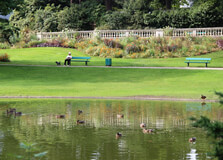
The Jardin des Plantes in Angers is one of the city's most treasured green spaces. Located in the heart of the city, this botanical garden offers a perfect blend of nature, history, and serenity. Whether you're an avid gardener, a nature lover, or simply looking for a peaceful escape, Jardin des Plantes is the ideal place to spend your time in Angers. This garden is not only a space for relaxation but also serves as a hub for environmental education, with a collection of plants and flowers from around the world. How to Reach Jardin des Plantes, Angers Jardin des Plantes is centrally located in Angers, making it easily accessible via various modes of transportation: By Train: The nearest major train station is Gare d'Angers Saint-Laud, which is approximately 15 minutes on foot from the garden. TGV trains connect Angers to several major cities, including Paris, Nantes, and Tours. By Bus: Angers has an excellent local bus network. Several bus lines stop near the Jardin des Plantes, including the Place du Ralliement stop, which is just a short walk away. By Car: If you're traveling by car, you can reach Jardin des Plantes easily from major roads. There are parking areas near the garden, and it’s a convenient location for those exploring Angers by car. Weather in Angers Angers experiences a temperate oceanic climate, which makes it pleasant to visit Jardin des Plantes throughout the year. Here’s what you can expect in each season: Spring (March to May): Spring in Angers is mild, with temperatures ranging from 10°C to 15°C (50°F to 59°F). This is an ideal time to visit the garden as it comes to life with colorful flowers and blooming trees. Summer (June to August): Summer brings warm weather, with temperatures between 22°C and 28°C (72°F to 82°F). The garden is especially beautiful during the summer months, with lush greenery and vibrant flowers. Autumn (September to November): Fall in Angers is cool and comfortable, with temperatures between 12°C and 17°C (54°F to 63°F). The changing colors of the leaves in the garden make this season visually stunning. Winter (December to February): Winter is mild, with temperatures ranging from 3°C to 8°C (37°F to 46°F). While colder, the garden remains a quiet place to enjoy a peaceful walk, and the lack of crowds makes it an ideal winter escape. Timing and Opening Hours The garden is open every day of the year and is free to visit. However, the timing of your visit will depend on the season: Summer (April to September): 8:00 AM - 8:00 PM Winter (October to March): 8:00 AM - 6:00 PM Although entry is free, the garden may occasionally have special events, workshops, or temporary exhibitions that require a ticket. Always check the website for updates or event schedules before visiting. Why is Jardin des Plantes Famous in Angers? Jardin des Plantes is one of the most famous and historically significant green spaces in Angers, offering both beauty and educational value. Here are some reasons why it is so well-loved: Botanical Diversity: The garden houses a diverse collection of plants, including both native species and exotic plants from around the world. It is a living museum of plant life, with sections dedicated to specific plant types such as aquatic plants, trees, and flowers. Historical Significance: The garden dates back to the 17th century and has played an important role in Angers' development as a center of scientific knowledge. It was initially created for educational purposes and has remained a key location for botany enthusiasts and students. Accessibility: Its location in the city center makes it accessible for both locals and tourists. It’s the perfect place to enjoy a leisurely stroll or a peaceful break from sightseeing in Angers. Entry and Visit Details Jardin des Plantes is a public park, and as such, entry is free to all visitors. The garden is open year-round, but the opening hours may vary slightly depending on the season. Here’s what you need to know: Free Admission: There is no charge for entry, making it an affordable destination for everyone. The garden is open to the public daily, except for special circumstances like major events or maintenance. Guided Tours: The garden offers guided tours (in French) for groups or individuals who wish to learn more about its history, plant species, and conservation efforts. Tours typically last 1 to 1.5 hours. Workshops and Events: Throughout the year, Jardin des Plantes hosts a variety of events, such as seasonal flower exhibitions, garden tours, and educational workshops. These may require prior registration or a small fee, so be sure to check the official schedule before planning your visit. History and Architecture Jardin des Plantes was created in 1748 as part of an effort to promote botany and science in the region. The garden’s design has evolved over the centuries, but it has always maintained a focus on education and research. The layout of the garden is organized into sections that represent different plant ecosystems, from tropical plants to temperate flowers. The garden’s architecture features a beautiful blend of formal landscaping with open spaces and inviting paths. Historical structures, including greenhouses and the original 18th-century garden walls, still stand, adding to the garden’s charm. A small pavilion near the entrance is a favorite spot for visitors to rest and enjoy the views of the surrounding greenery. Things to Do at Jardin des Plantes There are plenty of activities to enjoy when visiting Jardin des Plantes: Explore the Themed Gardens: The garden is divided into different sections, including a rose garden, an aquatic garden, and a collection of exotic plants. Each area offers unique plants and flowers that vary by season. Take a Leisurely Walk: The garden is perfect for a relaxing stroll. Enjoy the beauty of the carefully designed landscapes, with trees, flowers, and water features creating a peaceful atmosphere. Photography: Jardin des Plantes offers stunning photo opportunities, especially during spring and summer when flowers are in full bloom. Don’t forget your camera to capture the vibrant colors of the garden! Participate in Workshops and Events: Attend educational workshops or seasonal events, such as flower shows and garden tours. These events provide a deeper understanding of the plants and their ecosystems. Picnicking: The garden offers ample green space, making it a great location for a picnic. Bring along your favorite snacks and enjoy them in the fresh air surrounded by beautiful plant life. Interesting Facts about Jardin des Plantes The garden was originally designed for botanical research and education, and it continues to serve this purpose today. Jardin des Plantes is home to several rare and endangered plant species, making it an important site for conservation efforts. The garden hosts annual events like plant sales and seasonal flower exhibitions, attracting both gardening enthusiasts and tourists. It was one of the first public botanical gardens in France, and its historical importance adds to its charm as a cultural landmark in Angers. Tips for Visiting Jardin des Plantes Wear Comfortable Shoes: There are lots of paths to explore, so make sure to wear comfortable shoes for walking. Best Time to Visit: The best time to visit is during the spring or summer when the flowers are in full bloom and the weather is pleasant. Check for Events: Check the garden’s calendar for any special events, such as plant exhibitions or guided tours, before your visit. Bring a Picnic: The garden has plenty of open spaces, making it an excellent location for a picnic on a sunny day. Respect the Garden: As a public garden, it's important to respect the plants and avoid picking flowers or damaging the plants in any way.
Explore More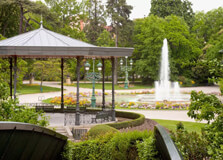
Le Jardin des Plantes is a beautiful botanical garden located in the heart of Toulouse, France. Established in the 18th century, this green oasis offers visitors a tranquil space to explore nature, learn about different plant species, and enjoy scenic walks. The garden is renowned for its historical significance, diverse plant collections, and its role in promoting scientific research and education. Whether you’re a plant enthusiast, a history lover, or someone seeking a peaceful spot to relax, Le Jardin des Plantes provides a perfect escape from the hustle and bustle of the city. How to Reach Le Jardin des Plantes, Toulouse Reaching Le Jardin des Plantes is convenient, as it is centrally located in Toulouse. Here are some ways to get there: By Car: If you’re driving, Le Jardin des Plantes is easily accessible by car from various parts of Toulouse. The address is 1, Rue de la Pomme, 31000 Toulouse, and there are nearby parking areas available, including parking lots at the city’s public facilities. By Public Transport: Toulouse has an efficient public transport network. You can take the metro Line A or Line B and get off at Jardin des Plantes station. Alternatively, several bus lines, including Line 63 and Line 66, have stops near the garden. By Bicycle: Toulouse is a bike-friendly city, and there are dedicated cycling lanes that make it easy to reach the garden by bicycle. There are also bike-sharing stations where you can rent a bike for the day. Weather in Toulouse Toulouse has a Mediterranean climate, with hot summers and mild winters. The weather varies throughout the year, and here’s what to expect when you visit Le Jardin des Plantes: Spring (March to May): Spring in Toulouse is a pleasant time to visit, with mild temperatures between 12°C and 20°C (54°F to 68°F). The garden is in full bloom during this time, offering visitors a vibrant and colorful experience. Summer (June to August): Summer in Toulouse can be quite warm, with temperatures reaching 25°C to 35°C (77°F to 95°F). It’s a perfect time to enjoy the shaded areas of the garden, as the trees provide a cool respite from the heat. Autumn (September to November): The autumn months are also mild, with temperatures ranging from 15°C to 25°C (59°F to 77°F). The garden takes on a beautiful golden hue as the leaves change color, making it an ideal time for a stroll. Winter (December to February): Winter in Toulouse is typically cool, with temperatures between 5°C and 12°C (41°F to 54°F). While it’s cooler, the garden is still a peaceful place to visit, and the absence of crowds makes for a serene experience. Opening Hours and Timings Le Jardin des Plantes is open throughout the year, with different timings depending on the season. Here's a general idea of the hours: Summer (May to September): The garden is open daily from 8:00 AM to 8:00 PM, giving you plenty of time to explore during the long daylight hours. Winter (October to April): During the colder months, the garden is open from 8:00 AM to 6:00 PM. While the days are shorter, it’s still a wonderful place to visit for a peaceful walk in the winter air. Closed: The garden is closed only on major public holidays like New Year's Day (January 1st) and Christmas Day (December 25th). It’s recommended to check the official website for any specific holiday closures. Why Famous for Toulouse? Le Jardin des Plantes is famous for several reasons: Historical Significance: The garden was created in 1730 and has played an important role in the scientific community of Toulouse. It was initially established as a place for botanic study and research and has since evolved into one of the city's most cherished green spaces. Rich Biodiversity: The garden houses over 3,000 plant species from all around the world. It offers visitors an opportunity to learn about various ecosystems, including Mediterranean, temperate, and tropical regions. Educational Role: The garden is also home to an educational center, where visitors can learn about plant conservation, gardening techniques, and the importance of biodiversity. The garden regularly hosts workshops, educational events, and tours. Entry and Visit Details Visiting Le Jardin des Plantes is affordable and accessible for everyone. Here are the details you need to know before your visit: Entry Fees: The garden is free to visit, making it an affordable option for tourists and locals alike. However, there may be a small fee for special events, exhibitions, or guided tours. Group Visits: If you’re visiting with a group, it’s a good idea to book in advance for a guided tour. The garden offers group rates, and a guide can provide insightful details about the plant species and the history of the garden. Family-Friendly: Le Jardin des Plantes is an excellent place for families, with plenty of open space, playgrounds, and interactive exhibits. Kids will love the colorful flowers, trees, and quiet paths to explore. Accessibility: The garden is fully accessible to people with disabilities. Wheelchairs are available for visitors, and there are accessible paths throughout the garden. History and Architecture Le Jardin des Plantes was founded in 1730 by the botanist Jacques Philippe de Chenevières. Originally created as a botanical research center, the garden played a significant role in the study of plant species and medicinal plants. It was later opened to the public and has since become a beloved landmark in Toulouse. The architecture of the garden reflects its historical importance. The central area features a classical layout with geometric paths and neatly arranged flower beds. Several pavilions and greenhouses have been added over the years to house different plant species, with some dating back to the 19th century. The picturesque setting is complemented by beautiful fountains, sculptures, and shaded areas, making it a perfect place to relax and enjoy nature. Things to Do at Le Jardin des Plantes Le Jardin des Plantes offers plenty of activities for visitors of all ages: Explore the Plant Collections: Wander through the various sections of the garden, which feature diverse plant collections including roses, Mediterranean plants, and exotic species from tropical regions. Visit the Greenhouses: The garden’s greenhouses house a variety of plants, including cacti, orchids, and rare species. These lush spaces are perfect for plant lovers to explore up close. Relax in the Shade: Le Jardin des Plantes offers plenty of shaded areas, perfect for a quiet afternoon reading a book or having a picnic with friends and family. Educational Workshops: Participate in one of the garden’s educational workshops or events, which cover a wide range of topics related to gardening, plant care, and environmental conservation. Take a Guided Tour: A guided tour is a fantastic way to learn more about the history of the garden, the various plant species, and the conservation efforts taking place. Tours are available for individuals and groups. Facts About Le Jardin des Plantes The garden spans 7 hectares and houses over 3,000 plant species from around the world. The garden features an array of themed areas, including a rose garden, tropical plants section, and Mediterranean garden. Le Jardin des Plantes is a part of the Université de Toulouse, and the university’s botanical and environmental research programs benefit from the garden’s collections. Tips for Visiting Le Jardin des Plantes Wear Comfortable Shoes: The garden is large and features several walking paths, so it’s a good idea to wear comfortable footwear for exploring. Check for Special Events: Before your visit, check the garden’s website for any special exhibitions, events, or workshops happening during your visit. Bring Water: While the garden is shaded, it’s a good idea to bring water, especially if you’re visiting during the summer months. Respect the Plants: Remember to respect the plants and wildlife in the garden. Do not pick flowers or disturb the plants.
Explore More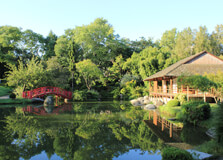
The Jardin Japonais in Toulouse is a serene and beautifully designed Japanese garden located in the heart of the city. It's an ideal place for relaxation, offering visitors a peaceful escape from the bustling streets of Toulouse. Whether you are a nature lover, a photography enthusiast, or simply someone who enjoys tranquility, the Jardin Japonais is a must-visit destination when in Toulouse, France. How to Reach Jardin Japonais, Toulouse The Jardin Japonais is situated within the Compans-Caffarelli park, a large public park near the city center of Toulouse. It’s easily accessible by various modes of transportation: By Metro: The closest metro station is "Compans Caffarelli," which is located on Line A of the Toulouse Metro. The garden is just a short walk from the station. By Bus: Several buses service the area. Bus lines 14, 45, and 73 stop near the Jardin Japonais. By Car: If you're driving, there are parking facilities available near the park. By Foot: If you're staying in central Toulouse, the garden is within walking distance of many attractions, making it a pleasant stroll through the city. Weather in Toulouse Toulouse enjoys a Mediterranean climate, which means that the weather is generally mild throughout the year. However, the best time to visit the Jardin Japonais is during spring (April to June) and autumn (September to October) when the weather is pleasantly warm, and the garden’s natural beauty is at its peak. Summer months can get quite hot, while winter tends to be chilly but rarely freezing. Timing of Jardin Japonais, Toulouse The Jardin Japonais is open daily, although the opening hours may vary depending on the season: Spring and Summer: 9:00 AM - 8:00 PM Autumn and Winter: 9:00 AM - 6:00 PM It is important to note that the garden may close during extreme weather conditions or for maintenance, so it’s a good idea to check ahead before your visit. Why Jardin Japonais is Famous in Toulouse? The Jardin Japonais is famous for its unique blend of traditional Japanese landscape design and French botanical gardens. The park was created in 1981 to celebrate the relationship between Toulouse and its Japanese sister city, Kagoshima. This connection is reflected in the architecture and design of the garden, making it not only a place of beauty but also a symbol of cross-cultural collaboration. What makes the garden stand out are its peaceful environment, koi-filled ponds, wooden bridges, traditional pagodas, and bonsai trees. It provides an excellent opportunity for visitors to experience the tranquility of a Japanese garden in the heart of France. Entry and Visit Details Entry to the Jardin Japonais is free for all visitors. It’s an open public park, and no prior reservations or tickets are required. It’s an ideal place to visit for those who wish to enjoy nature at no cost. However, there may be occasional special events or exhibitions that could involve a small fee, so it’s worth checking local listings before your visit. History and Architecture of Jardin Japonais The history of the Jardin Japonais dates back to 1981 when it was constructed as part of Toulouse’s connection with Kagoshima, Japan. The garden was designed by the landscape architect Jean-Claude Nicolas and is inspired by traditional Japanese gardens, particularly those found in Kyoto. The design emphasizes harmony with nature, featuring elements such as a koi pond, rock formations, bamboo groves, and elegant stone paths. The garden is meticulously planned with every element serving a purpose, whether it's to create a visual path for the eyes to follow or to evoke a sense of peace and contemplation. One of the standout features of the garden is the small wooden pagoda, which adds an authentic touch to the overall aesthetic. The garden’s design also integrates typical Japanese elements like torii gates, stone lanterns, and the strategic placement of plants to balance the composition. Things to Do in Jardin Japonais While the Jardin Japonais is primarily a place of relaxation and quiet reflection, there are several activities you can enjoy during your visit: Stroll Through the Garden: Take a peaceful walk along the meandering paths, and enjoy the natural beauty that changes with the seasons. The garden’s layout makes it ideal for photography enthusiasts looking to capture tranquil moments. Admire the Koi Pond: The large koi-filled pond is one of the central features of the garden. Spend time watching the colorful fish swim gracefully, which adds to the sense of calm in the garden. Photography: With its picturesque landscape, the garden is perfect for capturing stunning photographs, particularly at dawn or dusk when the light is soft and the ambiance is serene. Relax on the Benches: There are several benches placed throughout the garden where visitors can sit, relax, and enjoy the peaceful surroundings. Interesting Facts About Jardin Japonais The garden was created as a gift from the city of Kagoshima, Japan, to Toulouse to celebrate their long-standing friendship. The koi pond is home to a variety of colorful koi fish, and visitors are often seen feeding them. During spring, the garden comes alive with cherry blossoms, providing a spectacular view that attracts both locals and tourists alike. The garden is one of the few traditional Japanese gardens in France, making it a rare and unique destination. Tips for Visiting Jardin Japonais, Toulouse Bring a Camera: The tranquil environment and picturesque scenery make it an excellent spot for photography, so don’t forget your camera or smartphone! Visit During Off-Peak Hours: To fully enjoy the peaceful atmosphere, try visiting early in the morning or later in the evening when the garden is less crowded. Check for Events: Occasionally, the garden hosts cultural events or exhibits. Check the Toulouse tourism website for updates on these events. Wear Comfortable Shoes: The garden has paths and stepping stones, so comfortable footwear is recommended for walking around. Respect the Tranquility: The garden is a place for quiet reflection, so be mindful of noise levels and enjoy the peaceful surroundings. Conclusion Whether you're seeking a peaceful escape or simply want to enjoy some beautiful nature, the Jardin Japonais in Toulouse offers an exceptional experience. Its combination of Japanese culture and natural beauty makes it one of the city's hidden gems. The tranquil atmosphere, combined with its historical and architectural significance, ensures that visitors will have a memorable time in this beautiful garden.
Explore MoreClassical Spain With Paris 9 Nights - 10 Days Tour
10 Days/ 9 Night
Barcelona - Paris - Madrid - Seville - Granada
France And Swiss Alps 10 Nights - 11 Days Tour
11 Days/ 10 Night
Paris - Lyon - Zurich - Lucerne
European Discovery Classic 11 Nights - 12 Days Tour
12 Days/ 11 Night
Paris - Venice - Florence - Munich - Amsterdam - Innsbruck - Rome - Lucerne
From Madrid To Paris 6 Nights - 7 Days Tour
7 Days/ 6 Night
Barcelona - Paris - Madrid
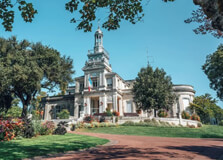
The Cognac Public Garden (Jardin Public de Cognac) is a beautifully landscaped park located in the heart of Cognac, a town known for its world-famous brandy. This park is an ideal location for visitors looking to relax, enjoy nature, or take a leisurely stroll through a peaceful green space. The garden is one of the highlights of Cognac, offering both locals and tourists a lovely escape from the hustle and bustle of the town’s busy streets. How to Reach Cognac Public Garden Getting to the Cognac Public Garden is easy, as it is centrally located in the town of Cognac. The park is within walking distance from many popular landmarks and attractions. Here are some of the best ways to reach the garden: By Train: The Cognac train station is about 1.5 kilometers (around a 15-minute walk) from the public garden. From the station, you can easily walk through the town’s charming streets to the garden. By Car: If you are traveling by car, you can drive to the Cognac Public Garden. There are parking spaces available nearby, although the area can be quite busy, especially during peak tourist seasons. On Foot: The garden is located in the center of town, so if you’re staying in or near the town center, you can easily walk to the park. Many visitors prefer to explore Cognac on foot, as the town’s historical sites are all within walking distance. By Bicycle: The town of Cognac is very bike-friendly, and cycling to the public garden is a great way to explore the town. There are bike racks available around the park where you can park your bike while you enjoy the garden. Weather in Cognac Cognac enjoys a temperate maritime climate, with mild winters and warm summers. The weather in the region is generally conducive to outdoor activities throughout the year, making the Cognac Public Garden a pleasant place to visit in all seasons. Here’s a breakdown of the weather: Spring (April to June): Spring in Cognac is mild, with temperatures ranging from 12°C to 20°C (54°F to 68°F). This is one of the best times to visit the garden, as the flowers are in full bloom and the weather is perfect for outdoor activities. Summer (July to August): Summers are warm, with temperatures between 20°C and 30°C (68°F to 86°F). It’s the peak tourist season, and the public garden is a popular spot to relax in the shade or enjoy a picnic under the sun. Autumn (September to November): The fall season is lovely in Cognac, with temperatures ranging from 10°C to 20°C (50°F to 68°F). The trees in the garden turn vibrant shades of red and orange, making it a picturesque time to visit. Winter (December to February): Winters in Cognac are relatively mild, with temperatures between 5°C and 10°C (41°F to 50°F). While it can be chilly, the garden is still a peaceful place to visit, especially if you want to enjoy the tranquility of the off-season. Timing of Cognac Public Garden The Cognac Public Garden is open year-round, and visitors can explore the park at any time of the day. The opening hours vary depending on the season and specific events held in the garden: General Opening Hours: The garden is open from 8:00 AM to 8:00 PM during the summer months. In the winter, the opening hours are usually from 8:00 AM to 6:00 PM. Best Time to Visit: For those looking to avoid crowds, it’s best to visit early in the morning or later in the afternoon. The park is especially serene during these times, and you can enjoy the beauty of the garden without the hustle and bustle of larger crowds. Why Cognac Public Garden is Famous The Cognac Public Garden is famous for its peaceful atmosphere, natural beauty, and historical significance. Here are some of the reasons the garden is a must-visit destination: Scenic Beauty: The garden is a perfect blend of well-maintained landscapes, flower beds, ancient trees, and a serene pond. The peaceful surroundings make it a great spot to relax or enjoy a walk. Historical Significance: The garden is situated in the center of Cognac, a town that is rich in history. The garden itself is part of the town’s historical landscape, offering a glimpse into the town’s cultural and horticultural heritage. Perfect Picnic Spot: Many visitors use the park as a place for picnics, as it offers plenty of green space and benches to sit on. It’s especially popular during the summer months when the weather is warm. Access to Other Attractions: The garden is located near other important sites in Cognac, including the Château de Cognac and the Hennessy distillery, making it a great place to relax after exploring the town’s historical landmarks. Entry and Visit Details about Cognac Public Garden Visiting the Cognac Public Garden is completely free, making it an excellent option for budget travelers. The garden is open to the public year-round, and you don’t need any tickets or passes to enter. However, if you wish to participate in any special events or activities held in the garden, you may need to check the schedule and register in advance. History and Architecture of Cognac Public Garden The Cognac Public Garden has a rich history dating back to the 19th century. It was created during a period of urban development in Cognac, reflecting the town’s desire to offer public green spaces for leisure and recreation. The garden’s design includes elements of classical landscaping, such as symmetrical paths, ornamental fountains, and tree-lined avenues. The garden is also home to some ancient trees that add to its historical charm. The garden’s architecture is complemented by the surrounding historic buildings, including the nearby city hall and various old townhouses. The design of the garden reflects the elegance and refinement of the town during the 1800s and early 1900s. Things to Do in Cognac Public Garden Relax and Enjoy the Scenery: The garden offers plenty of places to sit and enjoy the view, whether you’re on one of the benches near the pond or lying on the grass. Take a Stroll: There are several walking paths in the park, making it a great place to take a leisurely stroll, jog, or enjoy a morning walk. Picnic: The park is a fantastic spot for a picnic, as it provides ample green space and tranquil surroundings. Photography: The public garden offers beautiful photo opportunities with its lush greenery, fountains, and picturesque ponds. It’s especially stunning in the spring and autumn months. Attend Events: Throughout the year, the garden hosts various cultural events, including outdoor concerts, exhibitions, and festivals. Check the local event calendar for any special activities during your visit. Interesting Facts About Cognac Public Garden The garden was created in the 19th century and was designed to provide a public space for recreation and relaxation in the heart of the town. The park is home to some impressive trees, including centuries-old oaks and chestnuts, which add to the garden’s historic charm. The park has long been a favorite spot for locals, and it is often used for community events and family outings. During the summer months, the garden often hosts outdoor musical performances and other cultural events, making it a lively gathering place for the community. Tips for Visiting Cognac Public Garden Bring Snacks and Water: If you’re planning on spending time in the park, it’s a good idea to bring a picnic or some snacks, especially during the warmer months. Visit During the Off-Peak Hours: To enjoy a quieter and more peaceful experience, try to visit early in the morning or later in the afternoon when the park is less crowded. Check for Special Events: If you’re interested in cultural activities, check for any events happening in the garden, such as concerts or art exhibitions. Wear Comfortable Shoes: The park has several walking paths and areas to explore, so comfortable footwear is recommended. Conclusion The Cognac Public Garden is a serene and beautiful spot in the heart of Cognac, perfect for a relaxing escape or a leisurely day out. Whether you want to enjoy the natural beauty, take a walk, have a picnic, or simply unwind, this green oasis provides a tranquil setting for both locals and tourists. With its rich history, stunning landscape, and easy accessibility, the Cognac Public Garden is an essential stop when visiting this charming French town.
Explore More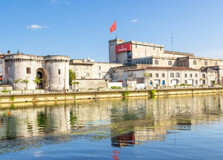
The Charente River is one of the most iconic natural landmarks in the Cognac region of France. Flowing gracefully through the heart of the town, it has shaped the history, economy, and culture of Cognac for centuries. As the main waterway of the Charente department, the river plays an essential role in the local environment and has been a vital transport route for goods, particularly Cognac brandy, which is produced in the region. The Charente River offers visitors a stunning blend of natural beauty and historical significance, making it a must-see destination in Cognac. How to Reach The Charente River The Charente River flows through Cognac, and it’s easily accessible from various points within the town. Here are the best ways to reach the river: By Train: The Cognac train station is located just a short distance from the river. From the station, you can either walk along the riverbank or take a short bus ride to one of the popular viewing spots along the Charente. By Car: If you are traveling by car, there are multiple spots along the river where you can park. The river is accessible from most parts of Cognac, so you can easily drive to one of the scenic viewpoints or riverfront areas. On Foot: For those staying in or around Cognac’s town center, walking to the Charente River is easy. The river is just a few minutes’ walk from the main square, and there are several walking paths along the riverbank that allow you to explore the area at your own pace. By Bicycle: Cognac is a bike-friendly town, and cycling along the Charente River is a great way to explore the area. You’ll find bike paths along the riverbanks, offering a scenic ride through nature while enjoying the view of the waterway. Weather in Cognac The climate in Cognac is temperate and relatively mild, making it an excellent destination for outdoor activities throughout the year. Here’s a breakdown of the weather throughout the seasons: Spring (April to June): Spring in Cognac is mild, with temperatures ranging from 12°C to 20°C (54°F to 68°F). This is a great time to visit the Charente River, as the flowers and trees along the riverbanks bloom, making the environment even more picturesque. Summer (July to August): Summer in Cognac is warm, with temperatures ranging from 20°C to 30°C (68°F to 86°F). This is a popular time for tourists, and the Charente River is perfect for boat rides and leisurely strolls along the banks. Autumn (September to November): Autumn brings cooler temperatures between 10°C and 20°C (50°F to 68°F). The fall foliage along the riverbanks creates a stunning backdrop, making it an excellent time to take a walk or enjoy a boat tour. Winter (December to February): Winters in Cognac are mild, with temperatures ranging from 5°C to 10°C (41°F to 50°F). Although it may be chilly, the Charente River’s beauty can still be enjoyed from the warmth of a nearby café or by taking a peaceful walk along the riverfront. Timing of The Charente River The Charente River is an outdoor natural feature, so it is accessible to visitors year-round. However, there are certain times when you may want to plan your visit to make the most of your experience: Best Time to Visit: The best time to visit the Charente River is during the spring and summer months when the weather is pleasant, and the area is lush with greenery. During these months, you can enjoy boat tours, picnics along the riverbanks, and other outdoor activities. Off-Peak Times: If you prefer a quieter experience, visiting the river during the autumn or winter months might be ideal. The area is less crowded, and the tranquility of the river during these seasons provides a peaceful experience. Why The Charente River is Famous The Charente River is famous for several reasons, many of which are intertwined with the history and development of Cognac itself. Here are some reasons why the Charente River holds a special place in the region: Historical Importance: The river has played a significant role in the region's economy and development. In the past, it was a crucial route for transporting Cognac brandy and other goods, allowing the town to thrive and establish itself as a global center for the brandy industry. Cognac Brandy Production: The Charente River is closely associated with the production of Cognac brandy. Many of the region’s famous distilleries are located along the river, and the waterway has long been used for shipping barrels of Cognac around the world. Natural Beauty: The river is known for its stunning natural scenery. The banks are lined with lush trees, and the surrounding landscape is dotted with vineyards, making it a great place for nature lovers and photographers. Recreational Activities: The river is also famous for its recreational opportunities. From scenic boat tours to walking or cycling along the riverbanks, there are plenty of ways to enjoy the Charente River’s beauty and serenity. Entry and Visit Details about The Charente River As the Charente River is a natural waterway, there is no formal entry fee or tickets required to visit it. However, there are several activities along the river that may have associated costs: Boat Tours: Guided boat tours along the Charente River are available. These tours offer a unique way to experience the river’s beauty and learn more about its historical significance. Prices for boat tours typically range from €15 to €30 per person, depending on the length of the tour. Walking and Cycling Trails: There are numerous walking and cycling trails along the Charente River. These are free to access, and visitors can explore at their leisure. The trails are well-maintained and provide beautiful views of the river and surrounding landscapes. Picnic Areas: There are several designated picnic areas along the river, offering a peaceful setting to enjoy a meal outdoors. These areas are free to access, though you should bring your own food and supplies. History and Architecture of The Charente River The Charente River has a rich history that dates back to ancient times. The river has been an important trade route for centuries, particularly during the Middle Ages when it was used to transport goods between the Atlantic Ocean and inland France. Its role in the production and export of Cognac brandy began in the 17th century and continues today, with many of the region’s distilleries still using the river to transport their products. The architecture along the river is a mix of historical buildings, including old warehouses, distilleries, and charming townhouses. Many of these buildings were constructed using local stone and have maintained their original features, providing visitors with a glimpse into the past. Things to Do at The Charente River The Charente River offers a wide range of activities for visitors of all interests. Here are some of the best things to do along the river: Take a Boat Tour: One of the best ways to explore the river is by boat. You can book a guided boat tour that will take you along the Charente, offering fantastic views of the town and the surrounding countryside. Enjoy a Scenic Walk: The walking trails along the river are perfect for a leisurely stroll. You can enjoy the natural beauty of the area, walk through lush green parks, and spot local wildlife. Cycling: The Charente River is an excellent place for cycling. There are bike paths that follow the river’s course, allowing you to enjoy the views while staying active. Picnic by the River: Pack a picnic and relax by the riverbank. The peaceful atmosphere makes it the perfect spot for a relaxing lunch or a quiet afternoon with family and friends. Interesting Facts about The Charente River The Charente River is 381 kilometers (237 miles) long and flows through several picturesque towns in the Charente and Charente-Maritime departments. The river is home to a variety of wildlife, including birds, fish, and other aquatic species. It’s a popular spot for birdwatching and nature walks. The Charente River has been instrumental in the growth of the Cognac industry, with many distilleries historically located along its banks. There are several historical bridges crossing the Charente River in Cognac, adding to the architectural charm of the town. Tips for Visiting The Charente River Check for Boat Tours: If you're interested in taking a boat tour, it's a good idea to check availability in advance, especially during peak tourist season. Bring Comfortable Shoes: If you plan to walk or cycle along the river, make sure to wear comfortable footwear for a more enjoyable experience. Pack Snacks and Drinks: If you're planning to spend a few hours along the river, pack a picnic to enjoy by the water. Visit in the Early Morning or Late Afternoon: For a more peaceful and scenic experience, visit the Charente River early in the morning or later in the afternoon, when the area is less crowded. Conclusion The Charente River is a beautiful and historically significant feature of the town of Cognac. Whether you're interested in history, nature, or simply enjoying a peaceful day outdoors, the river provides a perfect setting. From boat tours to scenic walks, the Charente offers something for everyone. Be sure to explore this beautiful waterway on your next visit to Cognac.
Explore More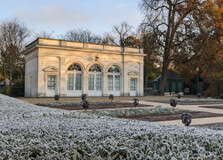
Les Jardins du Gouverneur is a beautiful and historical public garden located in the heart of Cognac, France. Known for its serene atmosphere, stunning landscaping, and rich history, it’s a favorite spot for both locals and tourists looking for a peaceful retreat in the city. The gardens are situated near the iconic Château de Cognac, offering visitors a chance to explore the beauty of the region while enjoying breathtaking views and lush greenery. How to Reach Les Jardins du Gouverneur Les Jardins du Gouverneur is conveniently located in the center of Cognac, making it easily accessible from various parts of the town. Here’s how to get there: By Car: The gardens are located just a short distance from the center of Cognac. If you're driving, you can park nearby, as there are several parking options available within walking distance. By Public Transport: If you prefer to use public transport, Cognac’s central bus station is within walking distance of the gardens. The local buses offer easy access to the area from other parts of the town. On Foot: If you're staying in the town center, it’s a pleasant 10-minute walk to the gardens. Strolling through the charming streets of Cognac is a great way to experience the town’s history and atmosphere. Weather in Cognac The weather in Cognac plays an important role in creating the lush gardens and picturesque surroundings. The region has a temperate climate, which means that you can enjoy the gardens year-round. Here’s what you can expect: Spring (March to May): Spring in Cognac is mild and pleasant, with temperatures ranging from 10°C to 18°C (50°F to 64°F). It’s a great time to see the gardens bloom and enjoy the fresh air. Summer (June to August): Summers in Cognac are warm, with temperatures averaging between 18°C to 28°C (64°F to 82°F). This is peak tourist season, and the gardens are at their fullest, with lush green foliage and beautiful flowers. Autumn (September to November): Autumn brings cooler temperatures (around 12°C to 22°C, 54°F to 72°F) and vibrant fall colors, making it a lovely time to visit the gardens and witness the changing seasons. Winter (December to February): Winters in Cognac are relatively mild, with temperatures ranging from 3°C to 10°C (37°F to 50°F). While it’s a quieter time to visit, the gardens still offer a peaceful place to stroll during the winter months. Why Les Jardins du Gouverneur is Famous Les Jardins du Gouverneur is famous for several reasons that make it an integral part of the Cognac experience: Historical Significance: The gardens are located near the Château de Cognac, a historic landmark that dates back to the 10th century. The gardens themselves have a history tied to the governance of the region, making them a part of the town’s rich cultural heritage. Architectural Beauty: The gardens feature beautifully manicured landscapes, including classical French garden design elements such as symmetrical paths, hedges, and fountains. The gardens complement the historic Château de Cognac, enhancing the area’s overall charm. Stunning Views: The gardens offer picturesque views of the surrounding area, including the majestic Château and the Charente River, making it a perfect spot for photography and relaxation. Perfect for Families and Couples: The gardens provide a relaxing environment for both families and couples, making it an ideal destination for a leisurely afternoon stroll or a picnic in nature. Entry and Visit Details about Les Jardins du Gouverneur Les Jardins du Gouverneur is open to the public and free to visit, making it a great spot for both locals and tourists to enjoy nature without any cost. Here’s what you need to know when planning your visit: Opening Hours: The gardens are open year-round, though specific hours may vary depending on the season. During the summer months, they are usually open from early morning until dusk, while in winter, the closing time may be earlier. Always check the official website or ask locals for the most up-to-date information. Admission: There is no admission fee to enter the gardens. However, donations are welcome to help maintain the gardens and preserve their beauty. Accessibility: The gardens are accessible to all visitors, including those with reduced mobility. Paths are wide and well-maintained, and there are benches for resting along the way. Guided Tours: While the gardens are self-guided, there may be occasional tours or events organized by the town of Cognac, especially during the tourist season. These tours are a great way to learn more about the history and design of the gardens. History and Architecture of Les Jardins du Gouverneur The history of Les Jardins du Gouverneur is closely tied to the governance of the region and the Château de Cognac. These gardens were once part of the grounds of the Château, where the local governors and nobility enjoyed private relaxation and entertainment. The design of the gardens follows the principles of French classical gardens, with well-ordered pathways, flower beds, and water features. The architecture of the gardens is a beautiful blend of historical and natural elements. You’ll find classical fountains, meticulously maintained hedges, and tree-lined avenues that create a sense of tranquility. The entire space is designed to offer visitors a peaceful escape in the middle of a bustling town. Things to Do at Les Jardins du Gouverneur There are plenty of activities to enjoy when visiting Les Jardins du Gouverneur: Leisurely Strolls: The gardens are perfect for a relaxing walk. The carefully manicured pathways are ideal for a peaceful stroll while admiring the plants, flowers, and trees that line the way. Photography: Whether you’re an amateur or professional photographer, the picturesque views of the gardens, Château de Cognac, and surrounding landscapes offer excellent photo opportunities. Picnics: The gardens provide a great setting for a picnic. With plenty of green spaces, you can bring a basket and enjoy a meal surrounded by nature and history. Relaxation: Find a quiet bench and relax in the serene environment, perfect for reading a book or simply enjoying the peaceful atmosphere. Seasonal Events: Throughout the year, the gardens may host seasonal events, such as flower exhibitions or local festivals, adding an extra layer of charm to your visit. Interesting Facts about Les Jardins du Gouverneur The gardens were once part of the grounds of the Château de Cognac, which was a residence for local nobility and governors of the region. The gardens are designed in the classical French style, which includes neat geometric patterns, a blend of water features, and well-maintained greenery. The gardens are located near the Charente River, providing visitors with beautiful scenic views of the riverbanks and surrounding areas. Les Jardins du Gouverneur is a favorite spot for both tourists and locals, offering a peaceful escape in the heart of the town. Tips for Visiting Les Jardins du Gouverneur Visit Early or Late: For a more peaceful experience, try visiting the gardens early in the morning or later in the afternoon when fewer people are around. Bring Comfortable Shoes: The gardens have several pathways and are ideal for walking, so make sure to wear comfortable shoes for your visit. Check for Events: Before your visit, check the schedule for any special events or exhibitions taking place in the gardens. These can add a unique aspect to your visit. Pack a Picnic: If you're visiting during a pleasant time of year, consider packing a picnic to enjoy in the gardens. There are plenty of spots for a relaxing meal surrounded by nature. Conclusion Les Jardins du Gouverneur is a tranquil haven in the heart of Cognac, offering visitors a chance to experience the beauty and history of the region. Whether you’re looking for a peaceful escape, a spot for photography, or simply a place to relax and unwind, these gardens provide an idyllic setting. With free admission, stunning views, and a serene atmosphere, Les Jardins du Gouverneur is a must-visit destination for anyone in Cognac.
Explore More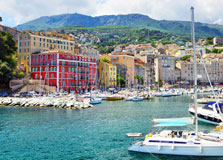
Bastia is a charming coastal city in the northern part of Corsica, known for its picturesque old port, historic sites, and vibrant cultural scene. It serves as an important gateway to the island and is rich in heritage and scenic beauty. How to Reach Bastia, Corsica You can reach Bastia using the following options: By Air: Bastia-Poretta Airport (BIA) is the main airport, located about 20 km south of the city. By Ferry: Ferries connect Bastia with mainland France (Marseille, Nice, Toulon) and Italy (Livorno, Genoa). By Car: Well-connected by roads, driving is a great way to explore Corsica. By Train: Corsican Railways connect Bastia to Ajaccio, Calvi, and other parts of the island. Weather in Bastia, Corsica Bastia has a Mediterranean climate with mild winters and warm summers: Spring (March-May): Pleasant temperatures from 15-22°C (59-72°F). Summer (June-August): Hot and sunny, reaching up to 30°C (86°F). Autumn (September-November): Mild temperatures with occasional rainfall. Winter (December-February): Cooler but rarely freezing, around 5-12°C (41-54°F). Timing and Entry Details Bastia is accessible year-round, with most attractions open from morning to evening. Specific site timings may vary, so checking in advance is recommended. Why is Bastia, Corsica Famous? Bastia is famous for its historic old town, stunning coastline, and rich cultural traditions. The city is known for its vibrant markets, beautiful baroque churches, and picturesque harbor. History and Architecture Founded by the Genoese in the 14th century, Bastia has a long and rich history. It was once the capital of Corsica and played a vital role in Mediterranean trade. The city features a blend of Genoese, French, and Corsican architectural influences. Things to Do in Bastia Explore the Old Port: Walk along the waterfront and enjoy the charming atmosphere. Visit the Citadel: Discover the historic fortress with breathtaking views. Stroll Through Terra Vecchia: The old town has narrow alleys, lively markets, and historical sites. Relax at the Beach: Nearby beaches like Arinella and Marana are great for sunbathing. Experience Local Cuisine: Try Corsican specialties like charcuterie, seafood, and local wines. Interesting Facts about Bastia Bastia was named after its Genoese-built fortress, the "Bastia". The city hosts the famous "Musiques d'ici et d'ailleurs" music festival. Bastia is known for its locally produced wine and spirits, including Cap Corse. Tips for Visiting Bastia Visit early in the morning or late afternoon to avoid crowds. Wear comfortable shoes for walking through the historic districts. Explore the local markets for authentic Corsican products. Take a boat tour to nearby islands and hidden coastal gems.
Explore More
Santa Giulia Beach is one of the most stunning beaches in Corsica, known for its turquoise waters, white sand, and breathtaking natural beauty. It is a paradise for beach lovers, offering relaxation and a variety of water activities. How to Reach Santa Giulia Beach, Corsica You can reach Santa Giulia Beach using the following options: By Air: The nearest airport is Figari-Sud Corse Airport, about 25 km away. By Car: The beach is accessible by car, with parking facilities available nearby. By Boat: Boat tours often include stops at Santa Giulia Beach. Weather in Santa Giulia Beach, Corsica The beach enjoys a Mediterranean climate with warm summers and mild winters: Spring (March-May): Temperatures range from 15-22°C (59-72°F). Summer (June-August): Hot and sunny, up to 30°C (86°F), perfect for swimming. Autumn (September-November): Pleasant weather with occasional rainfall. Winter (December-February): Cooler but still mild, around 10-15°C (50-59°F). Timing and Entry Details The beach is open to the public year-round, with no entry fee. Some private areas may have charges for sunbeds and water sports. Why is Santa Giulia Beach, Corsica Famous? Santa Giulia Beach is famous for its crystal-clear shallow waters, making it ideal for families and swimmers. It is also renowned for its scenic beauty and range of water activities. History and Architecture The beach is a natural wonder rather than a historical site. However, its surroundings feature Corsica's unique landscape, including rocky coves and lush greenery. Things to Do in Santa Giulia Beach Swimming and Sunbathing: Enjoy the soft sand and clear waters. Water Sports: Try paddleboarding, jet skiing, and snorkeling. Boat Tours: Explore nearby islands and hidden coves. Beachfront Dining: Enjoy local seafood at beachfront restaurants. Interesting Facts about Santa Giulia Beach It is one of Corsica's most photographed beaches. The beach is known for its shallow lagoon-like waters, perfect for families. It is a protected natural site with abundant marine life. Tips for Visiting Santa Giulia Beach Arrive early to secure a good spot during peak season. Bring snorkeling gear to explore the marine life. Check the weather forecast to plan your visit. Respect the environment by avoiding littering and protecting the natural beauty.
Explore More
Palombaggia, Corsica Palombaggia is one of Corsica’s most famous and picturesque beaches, known for its fine white sand, crystal-clear turquoise waters, and scenic backdrop of pine trees and granite rocks. It is a must-visit destination for nature lovers and beach enthusiasts. How to Reach Palombaggia, Corsica You can reach Palombaggia Beach using the following options: By Air: The nearest airport is Figari-Sud Corse Airport, approximately 30 km away. By Car: The beach is accessible by car from Porto-Vecchio, with parking facilities available. By Boat: Some boat tours offer stops at Palombaggia Beach. Weather in Palombaggia, Corsica The beach enjoys a Mediterranean climate with warm, sunny weather for most of the year: Spring (March-May): Temperatures range from 15-23°C (59-73°F). Summer (June-August): Hot and sunny, reaching up to 30°C (86°F). Autumn (September-November): Pleasant temperatures with occasional rain. Winter (December-February): Mild temperatures around 10-15°C (50-59°F). Timing and Entry Details The beach is open to the public year-round, with no entry fee. Some private beach clubs may charge for sunbeds and other services. Why is Palombaggia, Corsica Famous? Palombaggia is famous for its breathtaking landscape, clear shallow waters, and fine sand. It is often considered one of Europe’s most beautiful beaches, attracting visitors from around the world. History and Architecture Palombaggia Beach is a natural site rather than a historical one. However, the surrounding Corsican landscape, with its red granite rocks and lush pine forests, enhances its charm. Things to Do in Palombaggia Swimming and Sunbathing: Relax on the soft sand and swim in the warm waters. Water Sports: Enjoy paddleboarding, snorkeling, and windsurfing. Hiking: Explore trails leading to scenic viewpoints. Dining: Try fresh seafood at beachfront restaurants. Interesting Facts about Palombaggia It is ranked among the best beaches in Europe. The beach’s unique landscape includes striking red rocks and pine forests. Palombaggia is a protected natural site with rich marine biodiversity. Tips for Visiting Palombaggia Visit early in the morning to avoid crowds. Bring snorkeling gear to explore the underwater beauty. Check the weather forecast before planning your trip. Respect nature by avoiding littering and preserving the beach’s pristine environment.
Explore More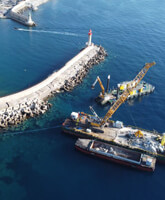
Le Vieux Port de Bastia is a picturesque and historic harbor in the heart of Bastia, Corsica. This charming old port is lined with colorful buildings, lively cafés, and a rich maritime history, making it a favorite spot for visitors exploring the island. How to Reach Le Vieux Port de Bastia, Corsica You can reach the old port through various means: By Air: Bastia-Poretta Airport is the nearest airport, located about 20 km south of Bastia. By Ferry: Ferries from mainland France and Italy arrive at Bastia’s main ferry terminal, a short walk from the port. By Car: Bastia is well-connected by road, with parking available near the port. By Train: Corsica’s scenic railway connects Bastia with other major towns. Weather in Le Vieux Port de Bastia, Corsica The area enjoys a Mediterranean climate: Spring (March-May): Mild and pleasant with temperatures ranging from 15-22°C (59-72°F). Summer (June-August): Warm and sunny, reaching up to 30°C (86°F). Autumn (September-November): Pleasant with occasional showers. Winter (December-February): Cooler but rarely below 10°C (50°F). Timing and Entry Details Le Vieux Port de Bastia is open year-round, and there is no entry fee to explore the port area. Restaurants, bars, and shops have varying operating hours. Why is Le Vieux Port de Bastia Famous? The old port is famous for its vibrant atmosphere, stunning waterfront views, and historical significance. It is a hub of maritime activity and a perfect place for a leisurely stroll. History and Architecture Le Vieux Port dates back to the 14th century and played a crucial role in Bastia’s development as a key Mediterranean trading port. Its architecture reflects a mix of Genoese, French, and Corsican influences, with pastel-colored buildings lining the waterfront. Things to Do in Le Vieux Port de Bastia Enjoy Waterfront Dining: Savor fresh seafood at one of the many restaurants overlooking the harbor. Photography: Capture the beauty of the old port with its colorful buildings and boats. Visit Saint-Jean-Baptiste Church: A stunning baroque church near the port. Boat Excursions: Take a boat trip to explore Corsica’s coastline. Interesting Facts about Le Vieux Port de Bastia It was once the main commercial port before larger ferry terminals were built. The port is surrounded by centuries-old fortifications. Many local fishermen still operate from the old port. Tips for Visiting Le Vieux Port de Bastia Visit in the morning to see the fishing boats return with fresh catches. Wear comfortable shoes for exploring the narrow streets around the port. Try local Corsican specialties at the nearby markets.
Explore More